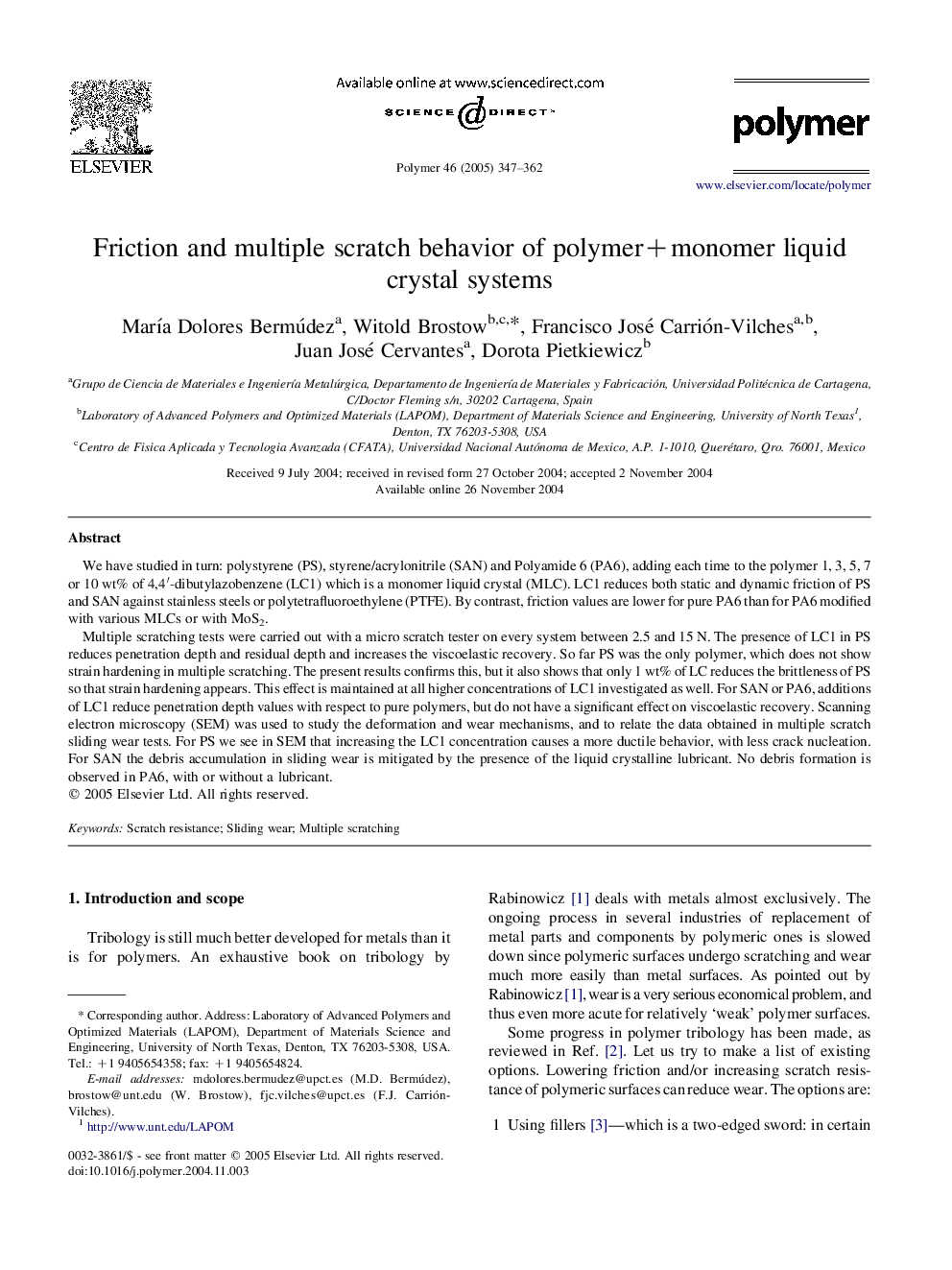| Article ID | Journal | Published Year | Pages | File Type |
|---|---|---|---|---|
| 9559392 | Polymer | 2005 | 16 Pages |
Abstract
Multiple scratching tests were carried out with a micro scratch tester on every system between 2.5 and 15Â N. The presence of LC1 in PS reduces penetration depth and residual depth and increases the viscoelastic recovery. So far PS was the only polymer, which does not show strain hardening in multiple scratching. The present results confirms this, but it also shows that only 1Â wt% of LC reduces the brittleness of PS so that strain hardening appears. This effect is maintained at all higher concentrations of LC1 investigated as well. For SAN or PA6, additions of LC1 reduce penetration depth values with respect to pure polymers, but do not have a significant effect on viscoelastic recovery. Scanning electron microscopy (SEM) was used to study the deformation and wear mechanisms, and to relate the data obtained in multiple scratch sliding wear tests. For PS we see in SEM that increasing the LC1 concentration causes a more ductile behavior, with less crack nucleation. For SAN the debris accumulation in sliding wear is mitigated by the presence of the liquid crystalline lubricant. No debris formation is observed in PA6, with or without a lubricant.
Keywords
Related Topics
Physical Sciences and Engineering
Chemistry
Organic Chemistry
Authors
MarÃa Dolores Bermúdez, Witold Brostow, Francisco José Carrión-Vilches, Juan José Cervantes, Dorota Pietkiewicz,
